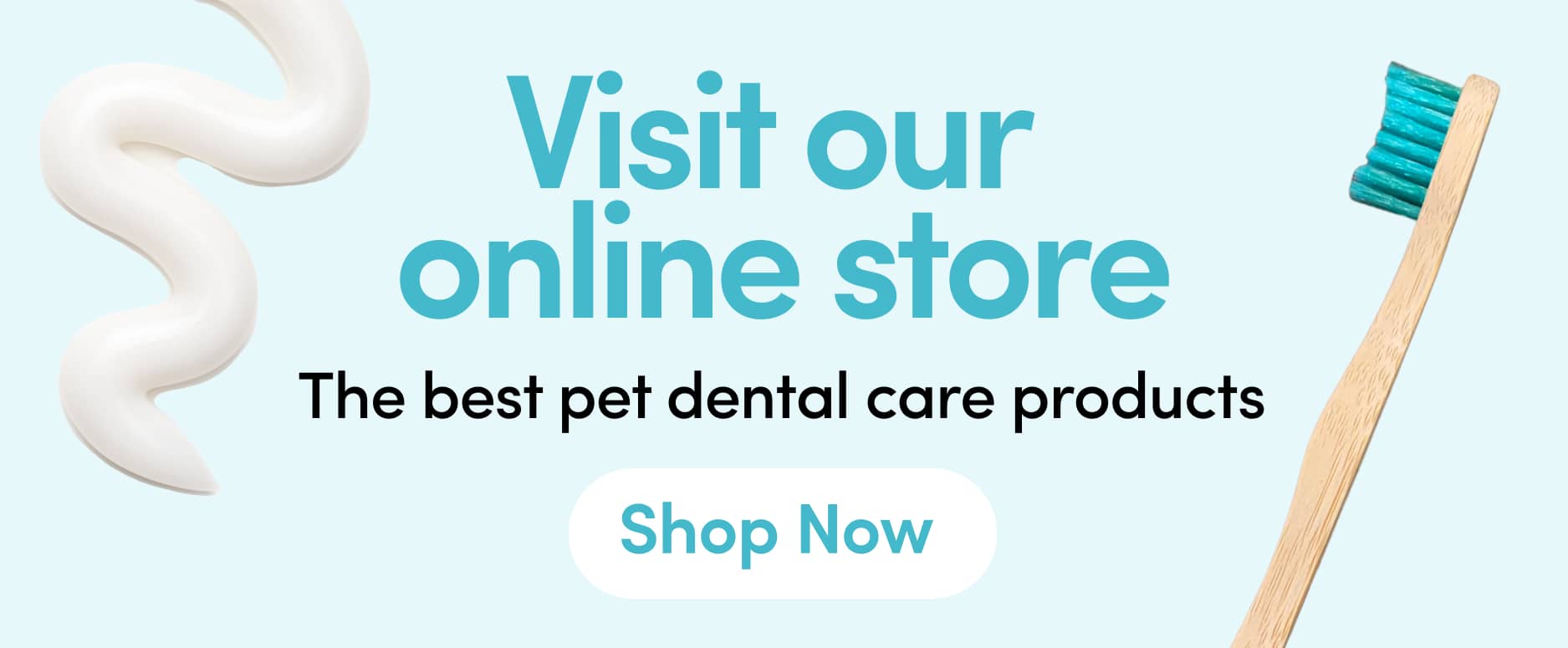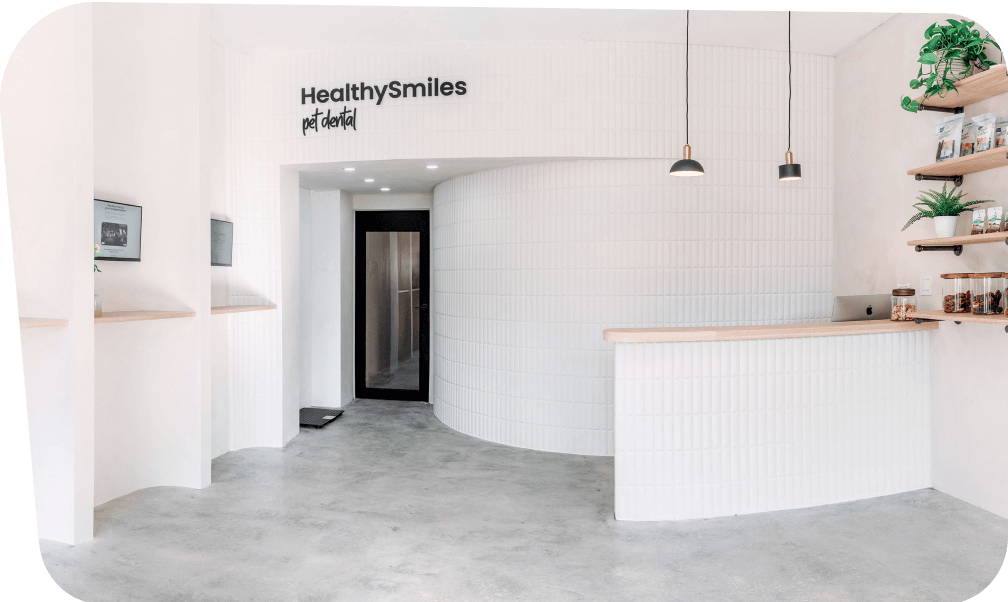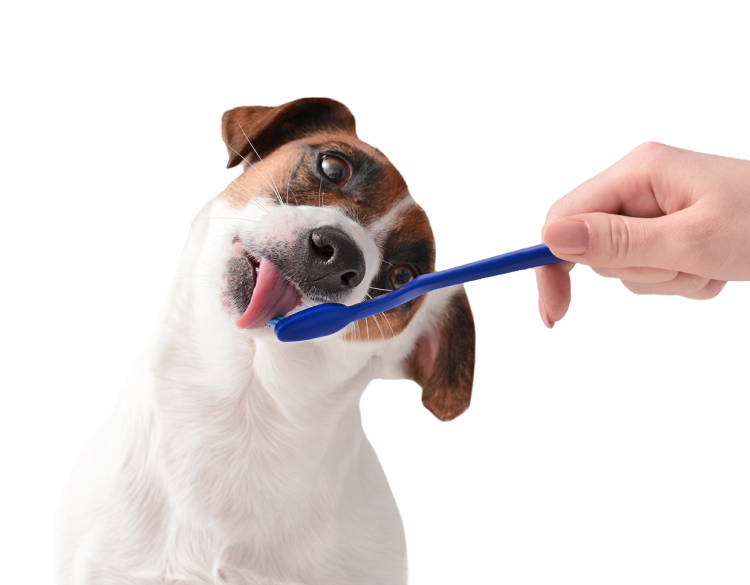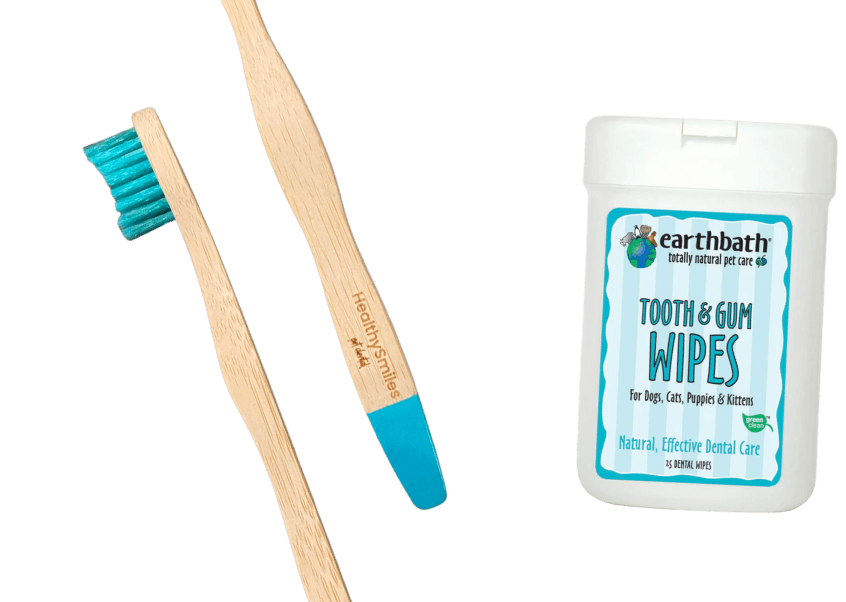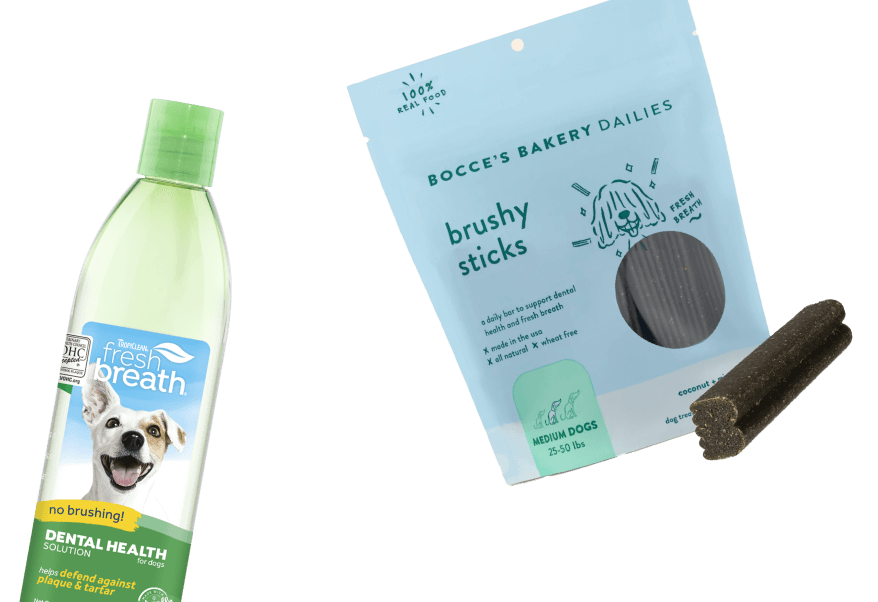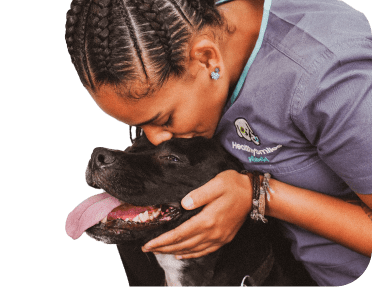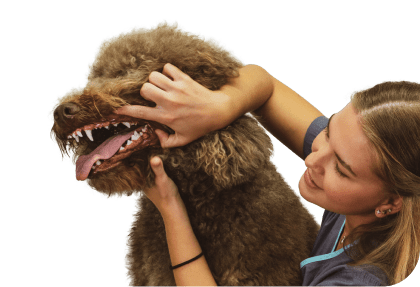Pet Dental Care Guide for Dogs and Cats
August 3, 2020Periodontal disease is so common in dogs and cats that regular dental exams are an essential part of their care regimen.
The American Animal Hospital Association recommends that pets receive annual dental cleanings beginning at the age of one or two. But how exactly are these exams and cleanings done, and do vets use the same procedures and tools as human dentists do?
Nope! The dental exam has some similarities but it’s quite different! The biggest difference? According to Banfield Pet Hospital, pets can develop plaque buildup, but it rarely leads to cavities.
One reason may be that there are lower amounts of decay-causing sugars in a pet’s diet.
Now, similar to human dental cleanings, pet dental cleanings consist of hand scaling to remove plaque and calculus, then polish, and finally a pet-safe fluoride gel to protect the dental enamel and lengthening the results of the dental.
This brief guide includes everything you want to know about dental health for your pet.
Content
- How important is a dental cleaning?
- How do you know your dog has dental disease?
- How ‘long’ does a dog or cat dental procedure take?
- When does your dog need anesthesia for dental cleanings?
- What about anesthesia-free dog teeth cleanings?
- What dental tools are used in a routine cleaning?
- How much does a dental cost?
- What to expect after dog/cat teeth cleaning?
- What about home care?
Quick facts on dog dental care and cat dental care
Did you know?
- Dogs and cats hide pain! Cats are especially stoic.
- Dental disease can lead to issues with your pet’s organs like heart disease.
- Pets may lose their teeth if they don’t get regular cleanings!
- Bad breath should always be a red flag that your pet needs an oral exam.
- A veterinarian may not want to anesthetize a medically compromised pet, and they will then use an alternative approach to clean your pet’s teeth.
- You can have your pet’s teeth cleaned with and without anesthesia.
Let’s dive into the essentials that all pet parents should know.
1. How important is a dental cleaning?
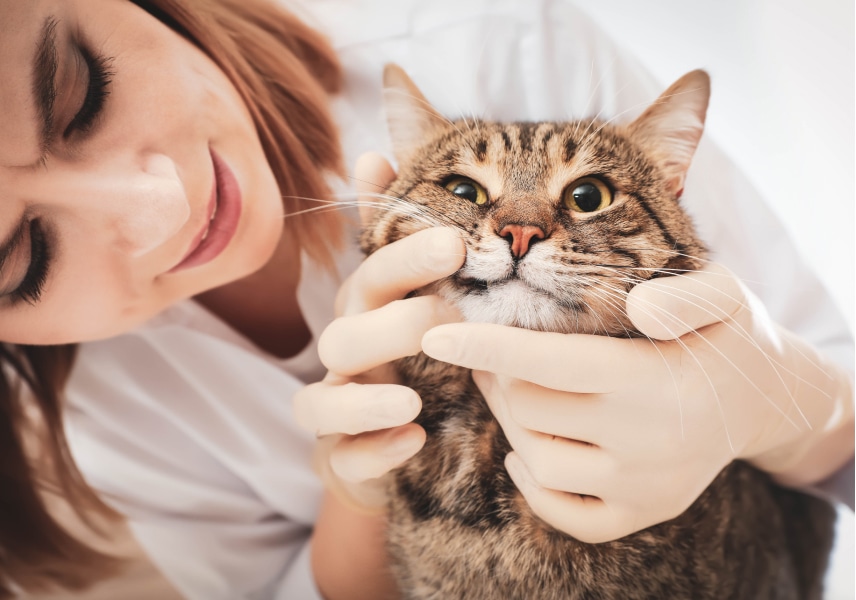
Do dogs and cats really need their teeth cleaned? Fact: Plaque begins to mineralize as early as 24 hours after adhering to the tooth surface. Daily brushing really helps!
Periodontitis is the most common disease of animals. Let’s first look at two important definitions:
- Gingivitis refers to inflammation of the gingiva. This represents the earliest stages of periodontitis and is easily reversible.
- Periodontitis describes inflammation of not only the gingiva but other structures of the periodontium (ligaments, gingiva connective tissue, and alveolar bone forming the tooth socket). Once advanced periodontitis occurs the changes are difficult to reverse.
Periodontal disease is really difficult to control once it has developed. This is why your vet is always talking about prevention. This can also lead to problems with your pet’s organs.
According to DVM360.com, Recent anecdotal reports have suggested that chronic periodontal disease causes problems in the heart, kidneys, and possibly the liver.
2. How do you know your dog or cat has dental disease?

Here are some red flags telling you that it’s time for an oral exam!
- Red swollen gums
- Bad breath
- Discolored teeth
- Bleeding gums
- Drooling
- Loose or missing teeth
- Poor appetite or dropping food by the bowl (this is common with cats)
- Sneezing after drinking water
- Facial swelling
- Face rubbing
- Difficulty swallowing
- Cats will frequently stop eating, this is a sign that you need to visit the vet
Cats (and dogs) can be affected by stomatitis
When the inflammation goes well beyond the mucogingival junction, it’s called stomatitis. This may be due to a variety of causes but it’s most commonly immune-mediated. Cats are often affected and will have a decreased appetite or anorexia, halitosis, dehydration, and blood-tinged saliva.
Full-mouth extractions or nearly full-mouth extractions for treatment of feline stomatitis have been shown to provide resolution of oral discomfort in approximately 80% of cases.
3. How ‘long’ does a dog or cat dental procedure take? It depends!
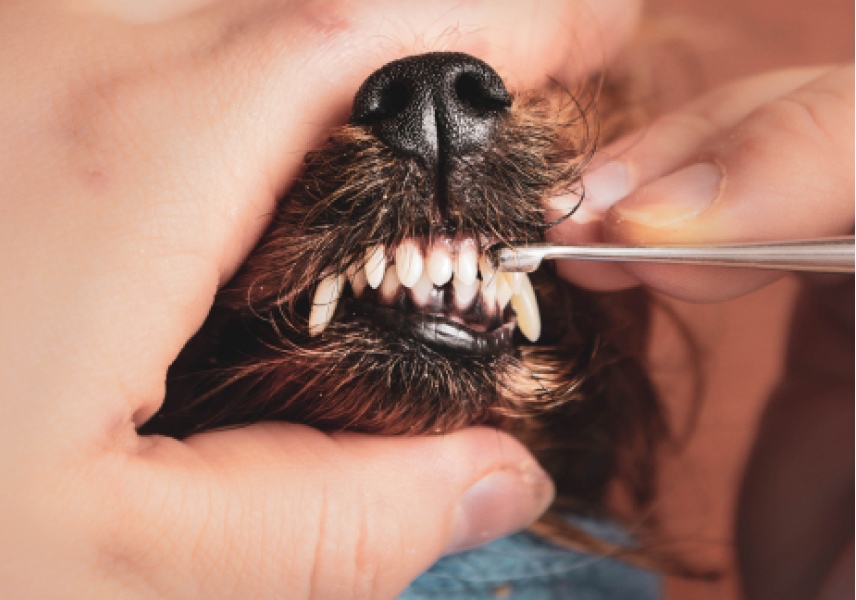
- Anesthetic: An anesthetic dental procedure is performed under anesthesia. Oftentimes other diagnostics are done such as blood tests, radiographs and extractions at the same time.⏰ These can take up to six hours including recovery time.
- Non-anesthetic: A non-anesthetic dental procedure is a dental cleaning completed without anesthesia. Dentals performed without anesthesia are typically done by a qualified veterinary technician. They are done to prevent periodontal disease.⏰ These can take from 45 minutes up to an hour – no recovery time needed.
The oral exam is typically done without any anesthesia if the animal isn’t in pain. A medical history of your dog or cat is done and clinical symptoms are discussed (the above) to determine the level of oral disease. This includes home care, diet, treats, and toys as all this information is important.
What about the procedure?
The dental or oral procedure will begin with an extraoral and intraoral exam. If the pet is experiencing discomfort or pain during the intraoral exam this will be determined by your vet or veterinarian technician. The extraoral exam includes an examination of the face, head, and neck. The ‘intraoral’ exam consists of evaluations of the soft tissues of the oral cavity, the dental structures, and the supporting structures of the teeth.
4. When does your dog need anesthesia for dental cleanings?
Anesthetic dental cleanings are required for severe periodontal disease. Also, when teeth need to be extracted, the use of sedation is required to avoid severe pain. If there is a complicated tooth fracture or an emergency your pet will likely need to be anesthetized.
5. What about anesthesia-free dog teeth cleanings?
An anesthesia-free dental cleaning focuses on removing the plaque and calculus on your pet’s teeth as a preventive treatment. Dental technicians clean the bacteria under the gum line and finish by polishing, wiping, and rinsing the mouth.
Even though a non-anesthetic dental may be recommended for all pets, according to the Whole Dog Journal, some of the best candidates for a non-anesthetic dental are dogs that have poor kidney and/or liver function, heart conditions, a recent injury or infection, or a history of seizures. Anesthesia may be a risk for these patients and a vet may recommend an alternative treatment plan.
6. What dental instruments are used in routine cleaning?
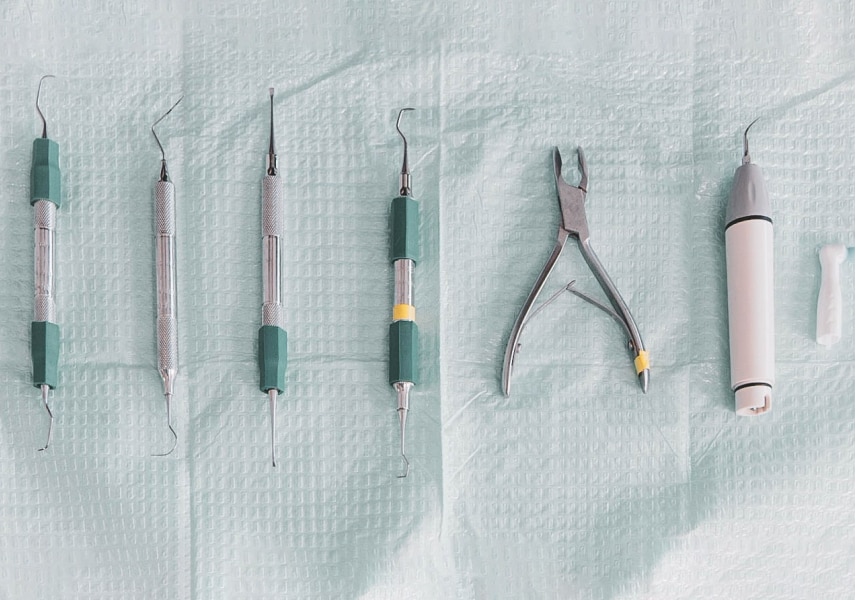
For patients with periodontal disease, the treatment goal is the removal of plaque and calculus from the teeth. The tools used will always depend on the severity of dental disease but for regular cleanings the tools used are:
- Power scaling: Includes an ultrasonic scaler.
- Hand scaling: Scalers, a dental probe, rongers, and curettes are used. Scalers are used on the tooth crown and curettes are designed to be used subgingivally.
These are the primary instruments used in veterinary medicine.
7. How much does a dental cost?
Non-anesthetic dentals range from $179 – $269 depending on the pet’s size. A cleaning with anesthesia will range from $400 to $1,000 depending on the procedure.
8. What to expect after a dog/cat teeth cleaning?
Non-Anesthetic
If your pet was not anesthetized and their treatment was anesthesia-free then there isn’t any ‘recovery’ time. Always watch your pet after any procedure to ensure there isn’t any discomfort and talk with the dental technician if there seems to be anything out of the ordinary going on with your pet.
Keep in mind that after the non-anesthetic dental your pet might be more tired and want to sleep more that day. Some pets experience thirst when they get home so make sure to have water available. Don’t start the home care routine the same day after the dental. Give your pet the rest of the day to enjoy their freshly clean mouth, and start the following day with brushing, rinsing and any other recommendation from the dental technician.
Anesthetic
If your pet did have an anesthetic dental procedure you should prepare a quiet and comfortable area for them to rest after surgery. Your pet should begin recovering from the anesthetic within a few hours, though it can take 24-48 hours to fully recover. Expect the pet to be lethargic and groggy. Sometimes pets experience trouble walking, nausea, and vomiting. Always call your veterinarian if you notice your pet is not recovering well from anesthesia as this might be a serious medical concern.
9. What about home care?
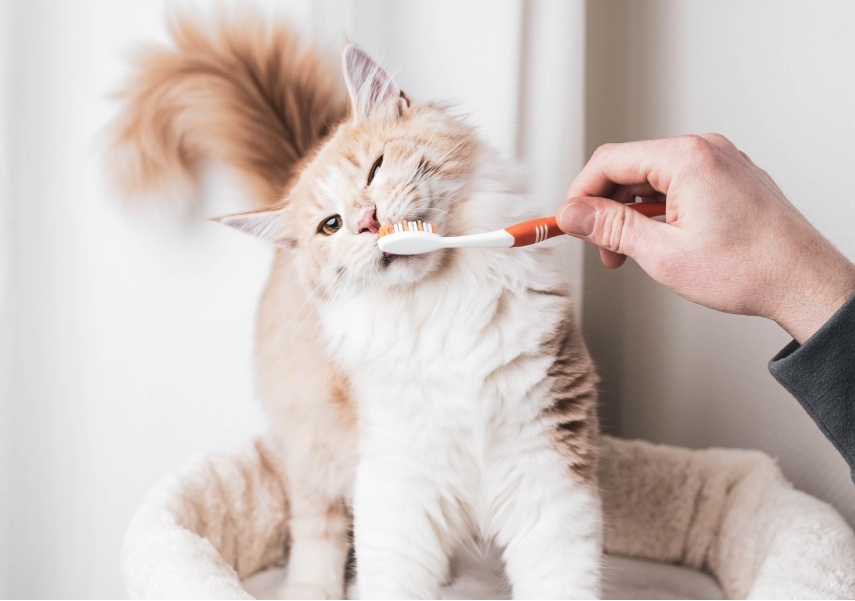
Toothpaste and Brushing
The reduction of bacteria in the mouth can be accomplished through brushing, diets, and the use of toys.
You can use a human toothbrush but ideally, you’ll use a ‘toothbrush’ designed for brushing your dog’s teeth that your vet can provide. A finger brush is a good choice for small breeds. Never use human toothpaste for a pet as these contain ingredients (people like to see foam when they brush their teeth) which are not meant to be swallowed by your cat or dog. Animal toothpaste comes in special flavors (chicken).
There are also non hide chews that are easily digested and great for dogs that enjoy chewing. Always talk to your vet about appropriate chews as some are capable of causing dental fractures.
Dental Chews
Talk to your veterinarian to help you decide when a dental cleaning or care is needed. Remember the red flags we talked about in this article! Bad breath is a sign that you need to bring your dog to a veterinarian to discuss their oral health. While you may not be talking to your vet about cavities, you will be discussing periodontal disease. Use this guide to help with your discussion.
Disclaimer:
If you have any questions or concerns, you should always visit or call your veterinarian – they are your best resource to ensure the health and well-being of your pets.
Sources:
Chapter on dentistry and oral surgery, ‘Clinical Textbook for Vet Technicians’.


